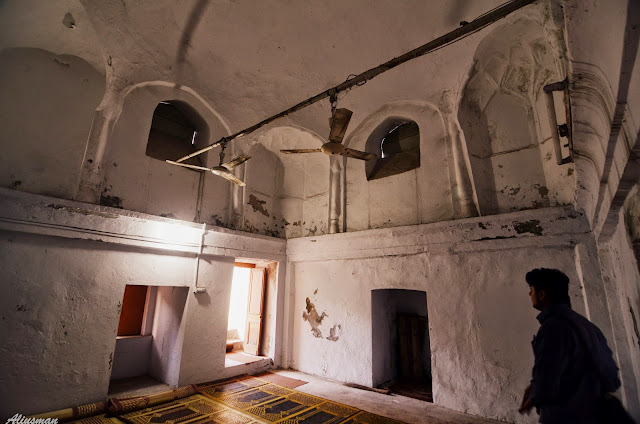19-03-2014
2014:
Late Rao Javed, a great historian from Lahore, took me to the Co-op store area of Lahore in 2014 to show me a historical tomb of unknown history from the Mughal era. After the construction of the Shalimar garden in the 16th century, a large number of residences, villages, shrines, and tombs started lining up along the new alignment of the Grand Trunk Road in the mid-seventeenth century. Begumpura is the most interesting town among these sites, in terms of Mughal gardens, that has survived along the Grand Trunk Road between Lahore Fort and Shalimar Garden. The sites of Begumpura were developed over a hundred years from the mid-seventeenth to the mid-eighteenth century.
At first glance, the structure seemed to be a tomb built in the seventeenth century. It was a square building roughly 18 feet long and wide, with its actual plinth level below the current natural soil level. The side walls were 12 feet tall and were raised above after the construction of squinches in the corner dome. Unfortunately, the entire building has been whitewashed and is now being used as a mosque by residents.
2024:
In 2024, I came across a historical reference that mentioned the tomb belonged to Sheikh Mohtram. Sheikh died in Lahore in the year 1690 AD and belonged to the lineage of Naqshbandi Islamic scholars. He was a famous saint who lived during the reign of all four great Mughals - Akbar, Jahangir, Shahjahan, and Alamgir. The tomb was in rectangular shape with a dome on top, and there were small minarets on all four corners which have fallen over time. Inside the tomb, there were three graves; one belonging to Sheikh and the other two belonging to his close relatives who were also buried there.
There were four arched entrances on each side, but they were later closed with bricks. The tomb's bad fate began during the Sikh era when the expensive marble was brutally removed and sold out. Later, during the British colonial period, it was sold to an Englishman who flattened the graves and constructed a hall on all four sides of the tomb, making it his residence. Later on, it was used by the North Western Railway Co-op Store office, which previously used it as storage for weapons. Then, it was used as part of a Soda Water factory for the Railway.
An interesting Farsi script was written on this tomb in the past, but it has faded with time. A translation of the script is as under:
"Those guiding lights for seekers of the path of salvation, who possessed the wisdom akin to Solomon and the intellect of Asif, the esteemed servants of God, have departed from this world to the assembly of saints. When I searched for their date of passing, Aqil Saleem remarked:
Subtract five from his date of death and say : 'O God, admit them into the highest paradise.'
The script talks about wise and knowledgeable individuals who were like guiding lights for people seeking a righteous path. They were compared to Solomon, known for his wisdom, and Asif, renowned for his intellect. These esteemed individuals, considered servants of God, have passed away from this world and joined the revered group of saints in the afterlife.
The riddle states that the numeric value of the phrase "قدس اللہ سرہ الاشرف" using the Abjad numerical system is 1107. When subtracting 5 from this value, as mentioned in the previous verse (شعر), it becomes 1102, which represents the Hijri year of the person's demise.
It essentially emphasizes the respect and admiration held for these departed souls and suggests a prayerful act to seek God's mercy and blessings for their souls in the afterlife.




No comments:
Post a Comment